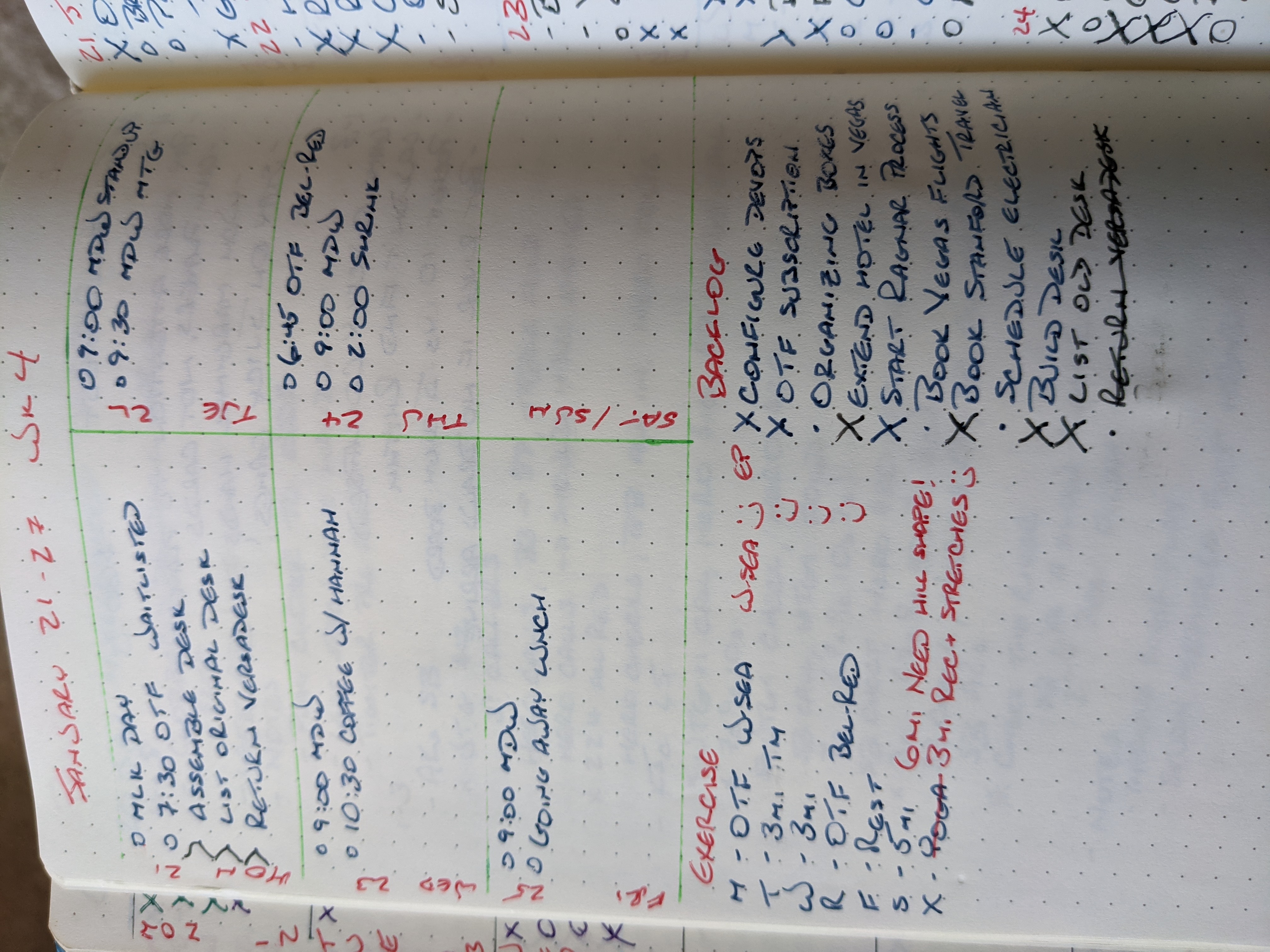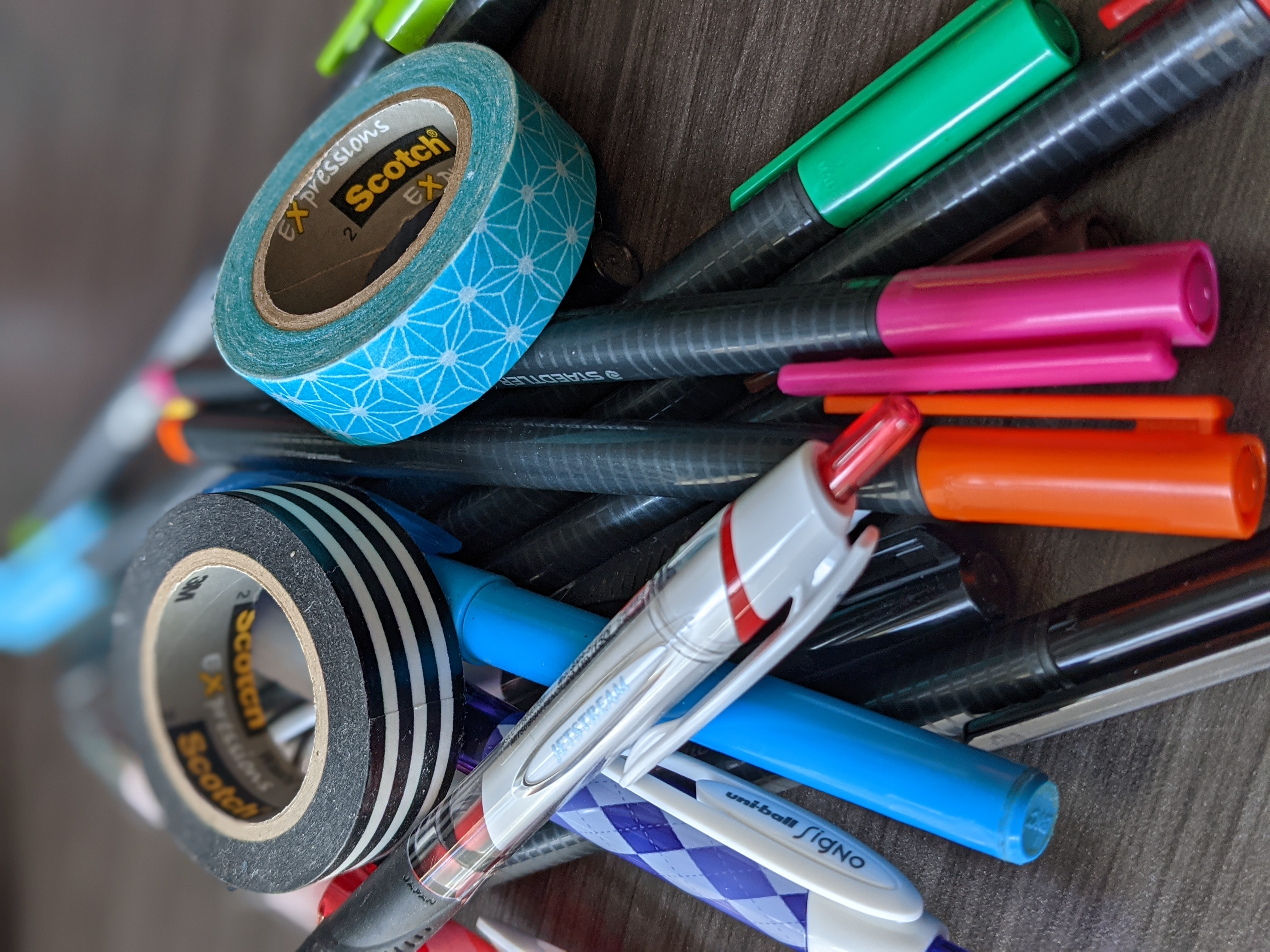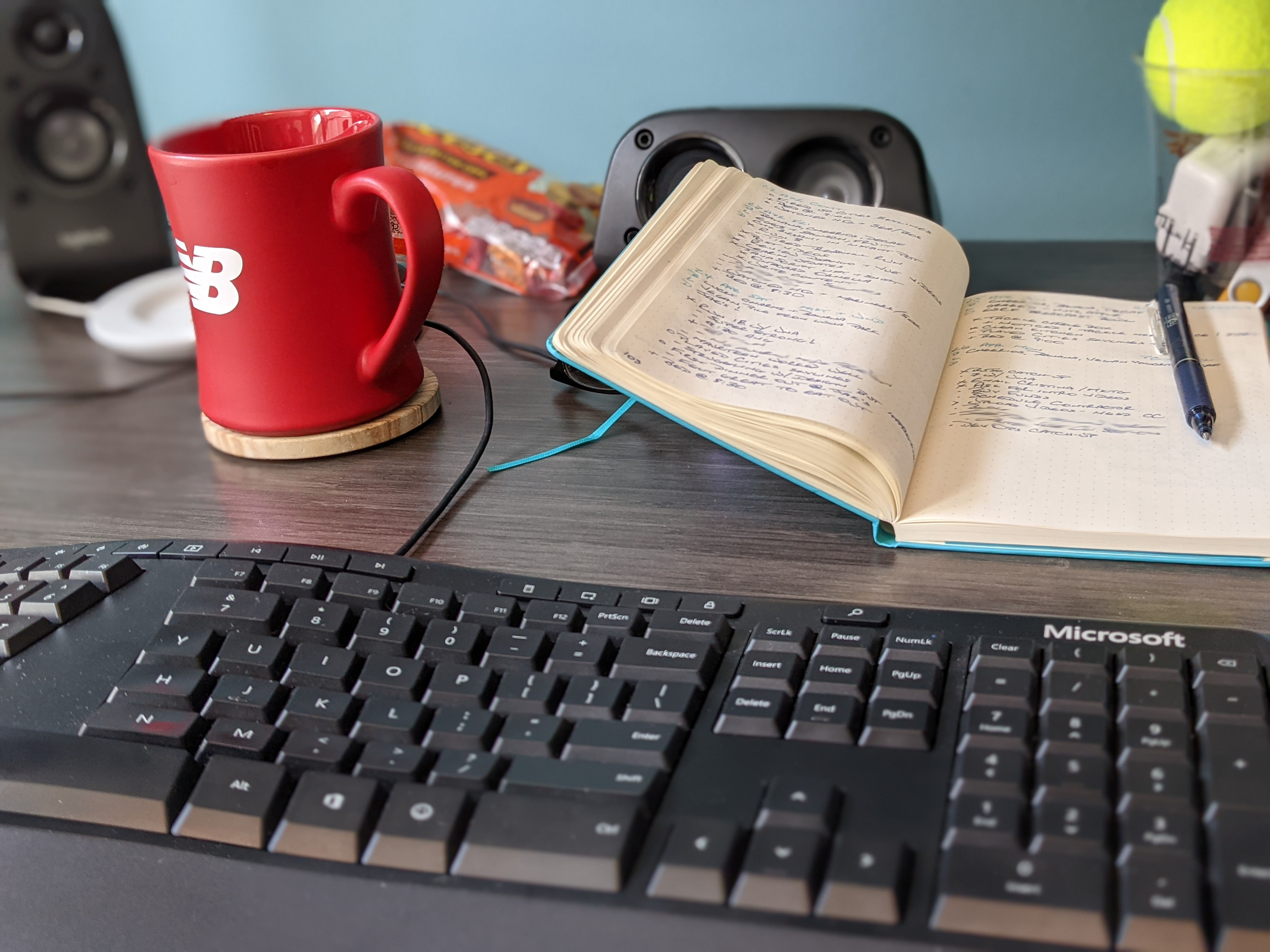Bullet Journaling - what worked for me
By now you’ve probably heard of a bullet journal (bujo), as it appears to be all over the place. But if you haven’t, let me sum it up for you. At its core a bullet journal is a system for managing tasks, making quick notes about life, and otherwise trying to put some order into the chaos that is life.
When I first discovered the concept of bullet journals I was all in. It seemed like magic to me, that this would finally be it! This would finally help me manage my constantly out of control life, and turn me into a task completion deadline meeting machine.
And… that didn’t happen. It didn’t happen partly because I wasn’t yet ready for it (I wasn’t diagnosed with ADHD until a couple of years later), and partly because I was doing it wrong - or at least wrong for me (more on this in a second). I left a trail of half-empty Moleskines in my wake, and a couple of other journaling options which didn’t deserve the fate they received.
I’m not alone. I’ve talked with a lot of people who’ve tried and abandoned bullet journaling. Its simplicity turns out to be too much for many people, and they get caught in a trap of trying to do too much or doing the wrong things.
Turns out, the bullet journal can work! I’ve now been using a bullet journal successfully for nearly a year now. It’s been a wonderful tool for managing both my personal and work life, and as a place to put all the random things which pop into my head (and there’s a lot of those!) Don’t get me wrong - my life is still chaos. But I have better control over things, I’m able to manage life a bit better, and generally feel less stressed.
It took a little bit of a journey (and said ADHD diagnosis), but it finally clicked. Everyone is different of course, but I wanted to share what I did (and stopped doing) to finally make it work for me.
I had to stop doing 3 things
1 - Stop reading about bullet journaling
OK, I’d prefer you at least read this blog before copying my first step here. But the point is important - I stopped reading about bullet journaling. I unfollowed the hashtag on Instagram, left the bullet journal subreddit, and closed Pinterest.
I mean absolutely no offense to the fine people who post perfectly lit pictures and create melodic videos of their bullet journals. I celebrate their artistic freedom, but those people are not my tribe and are involved in a completely different endeavor.
Typically bujo content creators are using their bujos, in part, as a crafting hobby. It looks like a wonderful hobby, and it’s one I wish I had some level of artistic skill to participate in. But I just don’t have it. And it led me down a path of trying to make a perfect journal…
2 - Stop trying to create the perfect bujo
After seeing all of these glorious layouts (or “spreads” as the bujo community calls them) I became obsessed with trying to find the perfect layout. I tried layout after layout after layout, and nothing ever seemed to stick, nothing worked.
I lacked artistic skills, so all my layouts became these small little boxes. I kept trying to figure out how to fit life into said boxes, and of course that was never going to work. But I didn’t realize this.

I found myself focused on the layout, convinced this was my problem. If I could break the matrix that is life and condense it into a perfect B6-sized single page I would know joy. I finally reached a point where I knew I couldn’t do it.
Unless maybe I was using the wrong tools! Let me try to find the right supplies…
3 - Stop buying supplies
Surely, if I had the right supplies I would be able to have amazing layouts. Turns out it wasn’t a matter of more pens and colors or washi tape (and don’t call me Shirley).
I don’t know why, but I love having office supplies. Pens of different colors. Straight edges. Washi tape.

I had them all! But I didn’t know how to use them. Honestly, I’m still not exactly sure what washi tape is or why I needed it.
I’m not artistic. We established this. But I was still trying to be. I wanted to be just like those people on Instagram who seemed to have it all together.
It finally sunk in the life of a bullet journal influencer was not in the cards for me. And I abandoned the whole concept.
I started doing these three things
After my diagnosis, I decided to pick up bullet journaling again. It seemed like the natural time. I went back to the beginning. I reverted back to the original design from Ryder Carroll, the inventor of the bullet journal. I watched his video again, and rescanned his book. And I made three big adjustments.
1 - I remember the YAGNI principle
There’s a programming principle called YAGNI - you aren’t gonna need it. I don’t need robust weekly spreads, cool spreads, habit trackers, or anything else. If I find I do, I add them as I go. But I stick to the basics.
I use the daily log demonstrated on the bullet journal page. This allows me to be free flowing and free form. There are days when I need lots of space, and days when I only need a couple of lines. There are days when I need to write a paragraph, and days when it’s nothing but quick notes.
When I was trying to find the perfect layout to solve everything I was constricting myself to a couple of small boxes. My bullet journal needed space to breathe, and to allow me to just write, jot down notes, and otherwise flow with the day. I need space to just be an ADHD person, who will focus on one topic one day, and something completely different in a different style the next.
I use a couple of the core components initially laid out by Ryder, and leave the rest behind. I use the daily and monthly spreads. I did eventually start a weekly spread, which has evolved over time.
And that leads me to…
2 - I accept the mistakes and changes
When I was trying to create the perfect bullet journal I would spend hours (literally) on a Sunday afternoon putting together the layout. This works well when I’m able to hyperfocus. But it’s terrible during when work kicks in and you’re trying to keep the same level of detail you had when there was nothing else going on.
Even though I keep my bullet journal simple and as friction free as possible, life still happens. There are days when I don’t bullet journal. I didn’t write in it this weekend, so I spent part of this morning getting caught up on my missed days. There’s even a full week in my current bullet journal with basically two notes for each day because I fell out of the habit; I forgave myself and moved on.
I still try new things. I have a weekly spread which I’ve updated numerous times. The only reason I created it was because I found myself logging the same things each day and wanted to centralize it. It’s rather basic, but it allows me to keep track of a few life things which are important to me.
Which leads me to…
3 - I make it more than just task tracking
If you read the examples on the bullet journal page (or in Ryder’s book) you’ll notice he goes beyond just task management. When my bullet journal was just about managing tasks and work it became work in my brain. It wasn’t fun, it was another task to manage my tasks. I only used it during work, and it became easy to abandon. This is probably the most common mistake I see, and it’s certainly one I made.
I use mine to log quite a bit. Life. Running. What I ate. Current events. General thoughts. What I watched on TV. Oh, and of course work. By incorporating it with the rest of my life I found myself more connected to it. It now sits at my desk, typically open, for me to constantly refer to, update, and see what I have coming up next.

Find what works
Ryder likes to say “do what works for you”. The key word here is “works”. I found a lot of possibilities which didn’t work for me. Once I returned to the basics (and again - for me - got an ADHD diagnosis and help), it finally all worked.
Don’t get me wrong - I’m not a task completion deadline meeting machine as any of my coworkers can attest. But there’s far fewer items getting left behind, less that I’m forgetting about, and more which is actually getting done.
In a later blog post I’ll write more about the system which works for me.
I’d love to know if you bullet journal, and what works for you. Feel free to comment below!